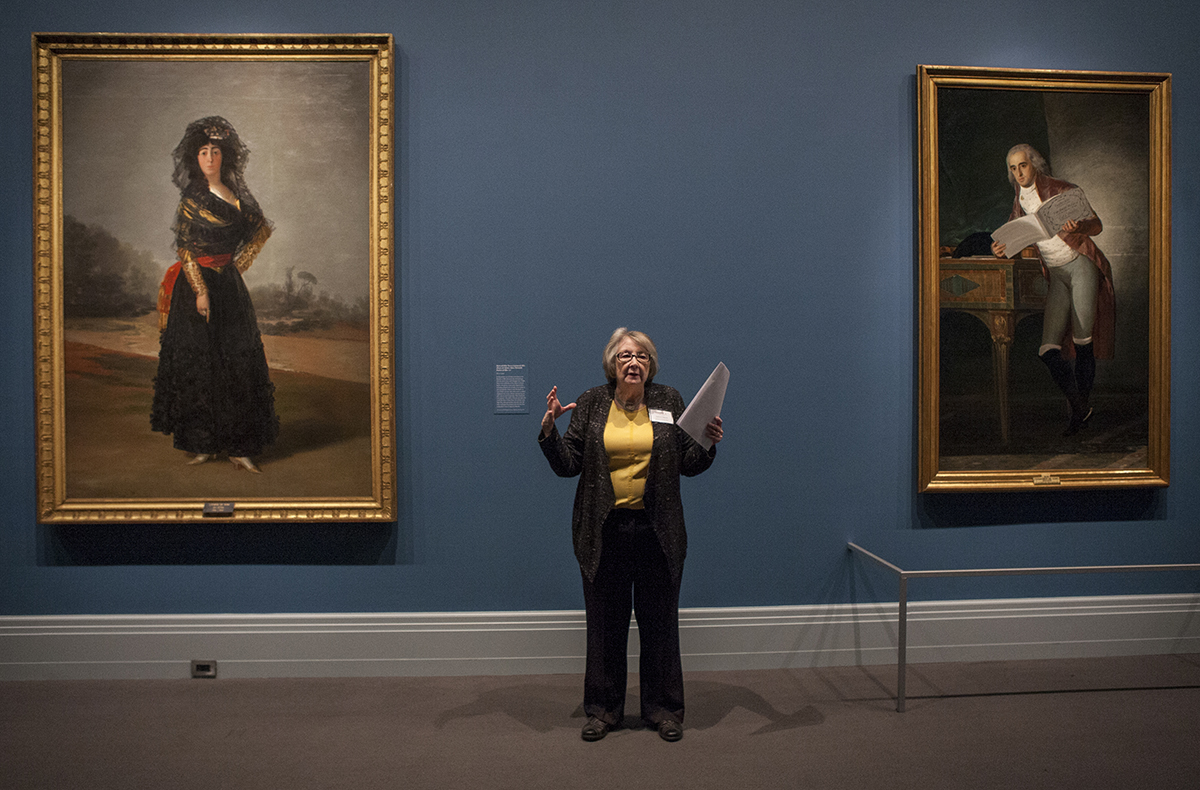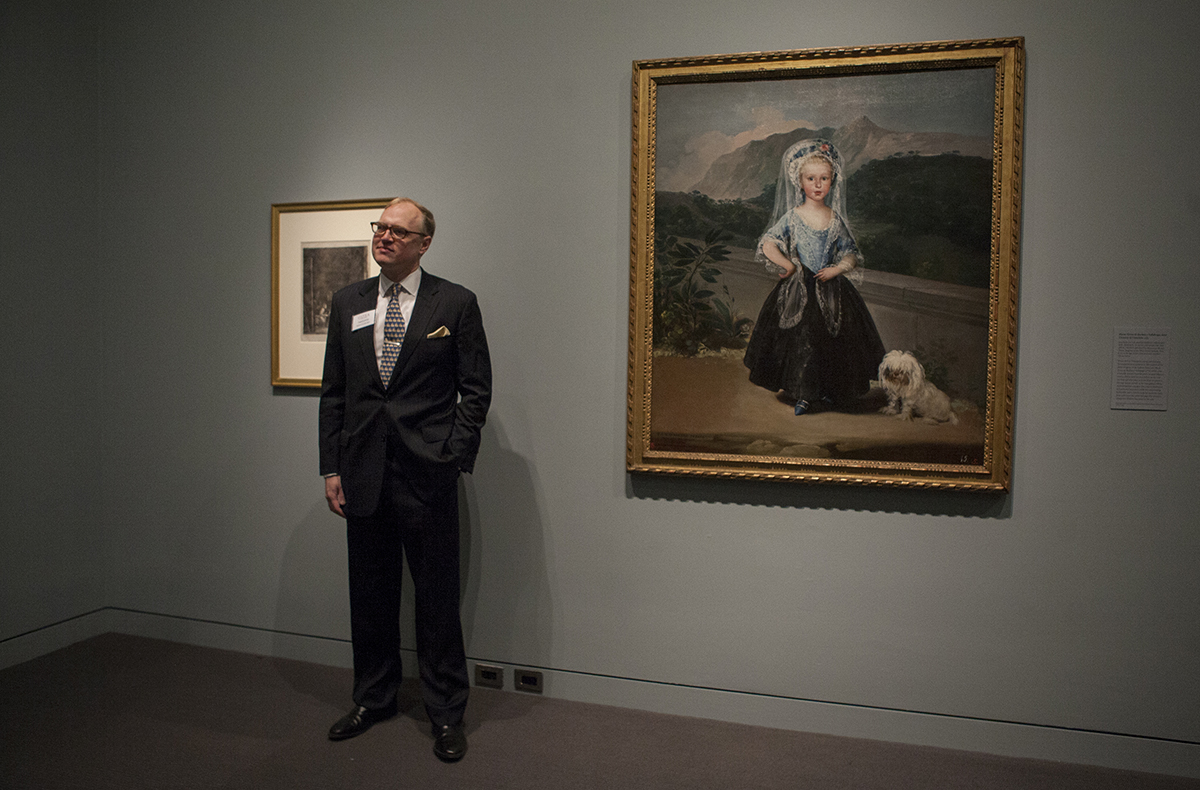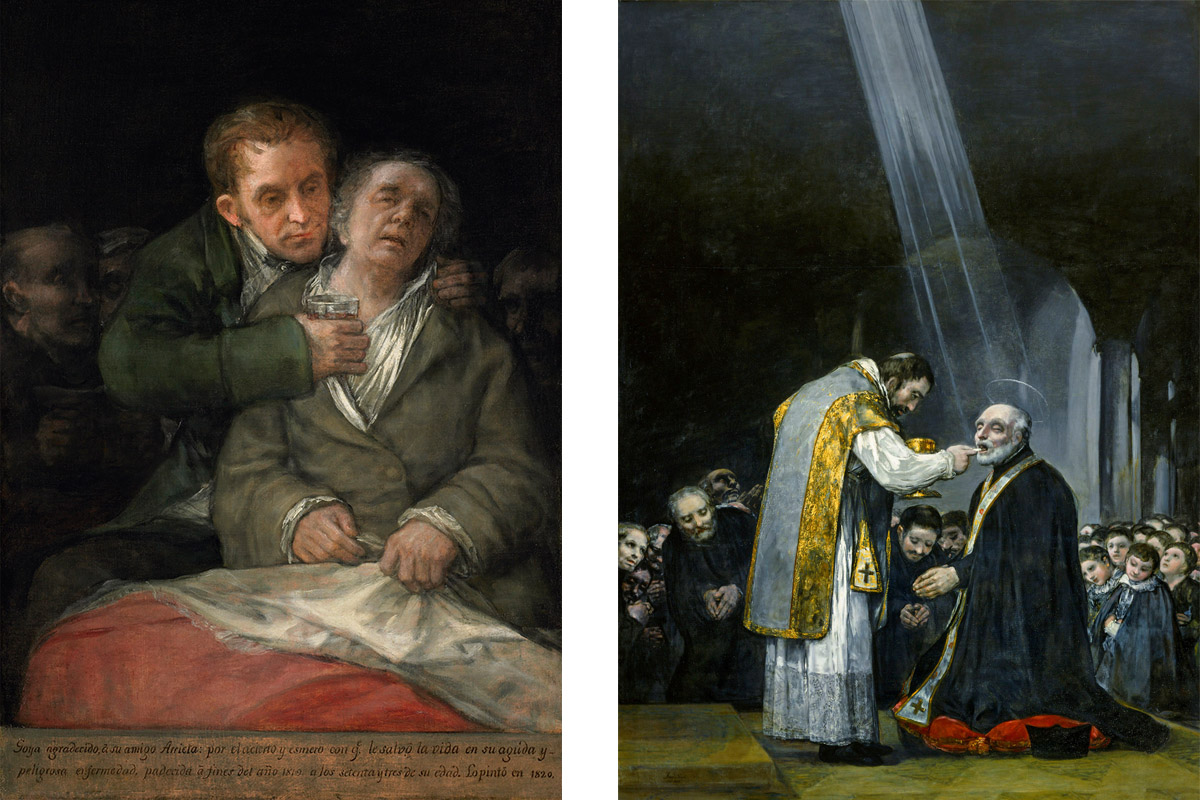‘Goya: Order and Disorder’ Opens at the Museum of Fine Arts

MFA curator Stephanie Stepanek discusses the pairing of “Duchess of Alba” (1797) and “Duke of Alba” (1795) at a press preview for “Goya: Order and Disorder.” The portraits of the husband and wife by Francisco Goya have been reunited for the first time in two centuries. / Photo by Olga Khvan
The Museum of Fine Arts has had a long relationship with Francisco Goya, especially under the direction of the late Eleanor Sayre, a granddaughter of Woodrow Wilson, who for decades served as the museum’s curator of prints and drawings. An internationally esteemed Goya scholar, Sayre doubled the MFA’s collection of the artist’s prints, spearheaded a 1974 exhibition at the museum about the evolution of his prints from drawings to their final stages, and was the mastermind behind a 1989 exhibition that focused on the artist’s engagement with the Enlightenment.
But when Stephanie Stepanek, the MFA’s current curator of prints and drawings, who had worked with Sayre on both exhibitions, was routinely browsing the museum’s collection about five years ago, she thought of a new way to show the artist’s work—one not bound by focus on a specific medium or chronology.
Her inspiration came from a comparison between two drawings—”Ice Skaters” and “Locos Patines” (“Crazy Skates”), created nearly a decade apart using different media, yet both representing figures struggling to regain balance.
Now, the drawings hang side by side in the Ann and Graham Gund Gallery of the MFA as part of the 170 works that make up “Goya: Order and Disorder,” the largest retrospective of the artist to take place in North America in 25 years.
“In a more traditional show, [the “Ice Skaters” and “Locos Patines”] would be in different sections. Chronologically arranged, they wouldn’t belong in the same room,” said Frederick Ilchman, curator of paintings and Art of Europe chair, at a press preview on Monday. “But thematically arranged, they start up a dialogue.”

Frederick Ilchman, the MFA’s curator of paintings and chair of Art of Europe, co-curated “Goya: Order and Disorder” with Stephanie Stepanek. / Photo by Olga Khvan
As co-curators, Stepanek and Ilchman divided the exhibition into eight sections, each one featuring combinations of the artist’s paintings, prints, and drawings to highlight a specific theme.
“People might object to a thematic structure and say it’s better to do things chronologically because you can see the development of an artist’s ideas, but Goya goes back and forth chronologically, and he didn’t just do this for paintings or drawings or prints. They’re linked completely,” said Ilchman. “Since an artist’s mind doesn’t have compartments, why should an exhibition?”
While 66 of the works—among them the two skating drawings and the famous “Seated Giant” and “The Sleep of Reason Produces Monsters”—come from the MFA’s own collection, a majority of them come on loan from 44 institutions and private collectors throughout Europe and the U.S., including the Boston Public Library, the Metropolitan Museum of Art, the Louvre, and others. The Museo Nacional del Prado in Madrid offered 21 works from its Goya collection, one of the largest and most important in the world.
Some thematic pairings that appear in the exhibition, like the one of the “Duke of Alba” and the “Duchess of Alba” in the portraiture section, seem rather commonsensical. The portraits of the husband and wife, painted in 1795 and 1797 respectively, have been reunited for the first time in two centuries.

“The Last Communion of St. Joseph Calasanz” (left) and “Self-Portrait with Doctor Arrieta” (right) are paired for comparison in “Goya: Order and Disorder.” / Images courtesy of the Museum of Fine Arts, Boston
Still, others, like the one of “The Last Communion of St. Joseph Calasanz” and “Self-Portrait with Doctor Arrieta” in the final section of the exhibition that provides ambitious summary of what makes Goya Goya, require a bit more thinking to decipher. Although they vary in subject and context—one a religious altarpiece and the other a gift for a friend who had treated the artist through a serious illness—they connect in theme, both evoking the transition between life and death.
“Goya always asks us to think,” said Stepanek. “Right now he’s very happy that we’re standing here trying to puzzle him out.”
“Goya: Order and Disorder” opens for MFA members only on October 7 and to the general public on October 12. It will remain on view until January 19, 2015. For more information, visit mfa.org.

